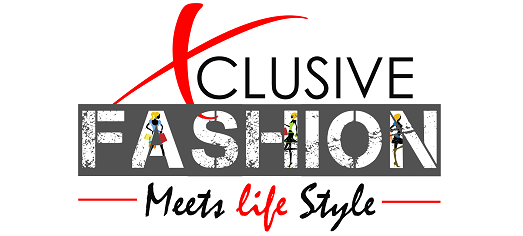Most Popular

How Much Does YouTube Pay? A 2023 Creator Guide
Sharing is caring!
YouTube has become one of the most popular platforms for content creators to showcase their talents, share knowledge, and entertain millions of viewers worldwide. With its massive user base and diverse content, many creators aspire to monetize their channels and earn a living through YouTube. However, understanding how much YouTube pays can be a complex and multifaceted topic. In this guide, we will explore the various factors that influence YouTube earnings, the monetization strategies available, and provide insights on maximizing your income as a YouTube creator.
Ads: How much does YouTube pay per view?
YouTube does not pay a fixed amount per view. The amount a creator earns from YouTube ads depends on several factors, including the type of ads displayed, the viewer’s location, the engagement level of the audience, and the overall performance of the channel.
YouTube pays creators based on a metric called CPM (Cost per Thousand Impressions). CPM refers to the amount advertisers are willing to pay for every thousand ad impressions. The CPM rates can vary widely and are influenced by factors such as the advertiser’s budget, the content category, the target audience, and the competition for ad placements.
On average, the CPM rates on YouTube range from a few cents to several dollars. However, it’s important to note that these rates can fluctuate significantly, and some content categories may command higher CPM rates than others. Additionally, creators who have a highly engaged audience, longer watch times, and viewers from countries with higher ad rates may earn more from each view.
It’s worth mentioning that YouTube takes a percentage of the ad revenue, and creators receive a share of that revenue. The exact revenue split varies but is generally around 55% for creators and 45% for YouTube.
While it’s challenging to provide an exact figure of how much YouTube pays per view, it is essential for creators to focus on growing their viewership, increasing engagement, and producing high-quality content to maximize their earnings from ad revenue.
CPMs vary by creator and niche. Looking at Google’s AdSense calculator, rates range from $3 to $30 per 1,000 video views. So, how does this translate into earnings?
| Views | Earnings |
| 1,000 views | $3-$30 |
| 100,000 views | $300-$2,00 |
| 1,000,000 views | $5,000-$25,000 |
Reaching the milestone of one million views is often a turning point for YouTubers, as it can lead to more substantial earnings. On average, YouTubers with over a million subscribers can expect to make around $60,000 per year. However, it is important to note that achieving such a large subscriber base is a challenging endeavor, as only a fraction of channels—around 42,000—have surpassed the one million subscriber mark.
It is worth noting that the niche or content category you belong to can greatly impact your earnings per view. Certain niches are known to have higher CPMs (Cost per Thousand Impressions) than others. This means that advertisers are willing to pay more for ad placements in these niches. As a result, creators in these niches have the potential to earn more from their views.
While it is difficult to provide an exhaustive list, some of the niches that typically command higher CPMs include:
- Finance and Investing: Content related to personal finance, investing, and money management often attracts advertisers with high budgets, leading to higher CPM rates.
- Technology and Gadgets: Tech-focused channels can attract advertisers who want to target tech-savvy audiences, resulting in higher ad rates.
- Health and Fitness: With the increasing popularity of health and fitness-related content, advertisers in this niche are often willing to pay more to reach an engaged and health-conscious audience.
- Travel and Adventure: Travel channels often feature captivating visuals and cater to an audience interested in exploring new destinations. Advertisers seeking to promote travel-related products or services may pay higher CPMs to target this specific audience.
- Beauty and Fashion: Advertisers in the beauty and fashion industry often prioritize reaching a highly engaged and influential audience. Consequently, creators in this niche may benefit from higher CPM rates.
It is important to note that these are just examples, and actual CPM rates may vary. Ad rates can change over time, and earnings are influenced by multiple factors, including viewer location, engagement metrics, ad formats, and competition. Creators should focus on producing high-quality content, engaging their audience, and exploring various monetization strategies to maximize their earnings potential.
YouTube Partner Program
The YouTube Partner Program (YPP) is a program offered by YouTube that allows content creators to monetize their videos and earn revenue from their YouTube channels. To qualify for the program, creators must meet certain eligibility requirements and adhere to YouTube’s policies and guidelines.
Eligibility Requirements:
Channel Monetization Policies: Creators must comply with YouTube’s policies and guidelines, including the Community Guidelines, copyright rules, and advertiser-friendly content guidelines.
Channel Size: Creators must have at least 1,000 subscribers on their YouTube channel.
Watch Time: Creators must have accumulated at least 4,000 watch hours on their channel within the past 12 months.
Location Availability: The YouTube Partner Program is available in many countries. However, eligibility may vary depending on the creator’s location. It is recommended to check YouTube’s official documentation for the most up-to-date information regarding program availability in specific regions.
Benefits of the YouTube Partner Program:
Monetization: Once accepted into the YouTube Partner Program, creators can earn revenue from advertisements shown on their videos. YouTube shares a portion of the ad revenue with the creators. The exact revenue split is typically 55% for creators and 45% for YouTube.
Channel Memberships: Creators can offer channel memberships to their audience, providing exclusive perks, such as badges, emojis, and access to members-only content, in exchange for a monthly fee.
Super Chat and Super Stickers: Live stream viewers can purchase Super Chats and Super Stickers to show their support during live chat sessions. Creators receive a portion of the revenue generated from these purchases.
YouTube Premium Revenue: Creators can earn a share of the revenue generated from YouTube Premium subscribers who watch their content.
Content Creation Resources: Access to various tools and resources, including analytics, copyright protection, and creator support, to help optimize and manage YouTube channels effectively.
It is important to note that while the YouTube Partner Program provides an opportunity for creators to monetize their content, the earnings can vary greatly depending on factors such as audience size, engagement levels, ad rates, and content niche. Additionally, creators should continue to produce high-quality content, engage their audience, and explore additional revenue streams, such as brand collaborations and merchandise sales, to maximize their earning potential on YouTube.
Types of YouTube ads
YouTube offers various types of ads that advertisers can use to reach their target audience. These ad formats provide different ways for creators to monetize their content and generate revenue. Here are some of the common types of YouTube ads:
Display Ads: These are traditional banner ads that appear on the right-hand sidebar of the YouTube watch page or above the video suggestions list on mobile devices. They can include text, images, or even rich media.
Overlay Ads: Overlay ads are semi-transparent ads that appear on the lower part of a video. They typically cover a small portion of the video content and can be closed by the viewer if desired.
Skippable Video Ads: Skippable video ads, also known as TrueView ads, are the most common ad format on YouTube. These ads allow viewers to skip them after watching for a few seconds (usually after 5 seconds). Advertisers are only charged if the viewer watches at least 30 seconds of the ad or interacts with it.
Non-Skippable Video Ads: Non-skippable video ads are ads that viewers must watch in their entirety before accessing the video content they intended to watch. These ads can be up to 15 or 20 seconds in length, depending on the viewer’s location.
Bumper Ads: Bumper ads are short, non-skippable video ads that appear before the viewer’s chosen video and last a maximum of 6 seconds. These ads are designed to deliver a brief and impactful message.
Sponsored Cards: Sponsored cards are small, interactive info cards that appear within a video. They can display content such as products, related videos, playlists, or external websites. Viewers can click on the cards to access additional information.
Sponsored Product Placements: In some cases, advertisers may collaborate directly with creators to feature their products or brands within the content of the video itself. These placements can be in the form of mentions, demonstrations, or integrations.
Masthead Ads: Masthead ads are premium placements that appear at the top of the YouTube homepage on all devices. They are highly visible and can provide significant exposure to advertisers.
It’s important to note that the availability of specific ad formats may vary based on factors such as the viewer’s location, the advertiser’s targeting preferences, and the type of content being watched.
YouTube provides creators with the ability to monetize their content through these ad formats, allowing them to earn revenue based on ad impressions, clicks, or viewer engagement with the ads.
Other ways YouTubers make money include:
Sponsorships and Brand Deals:
Many successful YouTubers secure sponsorships and brand deals, which can be highly lucrative. Brands collaborate with creators to promote their products or services in exchange for payment. The amount earned from sponsorships varies widely depending on factors like channel size, niche, engagement, and the partnership’s terms.
YouTube Premium Revenue:
YouTube Premium is a subscription-based service that allows users to watch ad-free videos, access YouTube Originals, and enjoy background play. Creators receive a share of the revenue generated from YouTube Premium subscriptions based on the amount of time premium subscribers spend watching their content.
Affiliate Marketing and Merchandise Sales:
Beyond YouTube’s monetization features, creators can explore additional revenue streams such as affiliate marketing and merchandise sales. By partnering with affiliate programs and promoting products or services in their videos or descriptions, creators can earn commissions on successful referrals. Selling branded merchandise, including clothing, accessories, and digital products, is another popular avenue for generating income.
Factors Influencing Earnings:
Several factors impact a creator’s earnings potential on YouTube. These include the niche or genre of the content, the size and engagement of the audience, the geographic location of viewers, seasonality, the length of videos, and the overall popularity of the channel.
How many views do you need to get paid on YouTube?
To start earning from YouTube, creators need to join the Partner Program and meet the requirement of accumulating 4,000 public watch hours on their channel. The number of views alone does not directly determine earnings, but maximizing ad views is crucial. However, it can be challenging as approximately 40% of viewers use AdBlock, which bypasses video ads.
How much does a YouTuber with one million subscribers make?
On average, they could earn around $2,000 to $3,500 per video from ads with approximately 600,000 views.
Do YouTubers get paid monthly?
YouTubers in the YouTube Partner Program receive monthly payments through AdSense, which is Google’s advertising platform. Payments are typically made between the 21st and 26th of each month. However, it’s important to note that creators must exceed the minimum payment threshold of $100. If earnings do not reach this threshold in a given month, the accumulated earnings will roll over to the next month until the threshold is met.
Please keep in mind that these figures and processes are subject to change, so it’s always recommended to refer to YouTube’s official documentation or consult with the YouTube Partner Program for the most up-to-date and accurate information.

































